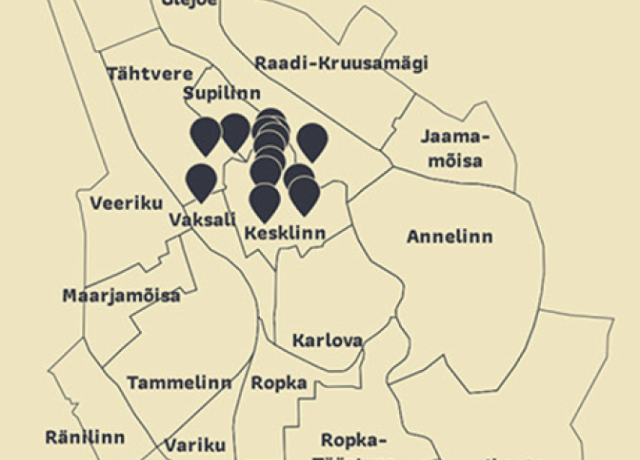Tracing the Heritage of the University of Tartu: A European Heritage Stories Project
Tracing the Heritage of the University of Tartu: A European Heritage Stories Project
Storytellers from the University of Tartu, Estonia, joined last year’s European Heritage Stories initiative with a project which invited students and professors, past and present, to map local heritage sites and objects in the university. The Linking Home, Linking Europe project intended to offer a fresh perspective on the University’s centuries-old multicultural history.
As part of our European Heritage Stories initiative, the University of Tartu was a part of one of the largest European heritage-sharing experiences. The initiative provided the opportunity to explore local heritage from a European perspective. Last year over 80 were submitted by communities across Europe, putting dozens of local heritage sites on the map of the continent.
This year’s edition again sparked a great deal of interest, with 84 projects submitted by storytellers in 20 countries. The originality of the projects submitted and the diversity of creative approaches revealed a great passion for exploring European heritage.
The University of Tartu’s project is one of the stories that illustrates the creative potential of European heritage groups and the ways in which they can revitalize local heritage. It was awarded with a €10,000 grant from the Council of Europe and European Commission, which supported the delivery of the project.
Linking Home, Linking Europe
Founded in 1632, the University of Tartu bears the imprint of cross-cultural connections that have shaped the whole city. Throughout its existence, it has been open to foreign students, welcoming young people from neighbouring countries and other parts of the world. Connecting different cultural backgrounds for over three centuries, it is a landmark of the city’s multiculturalism.
Through the Linking Home, Linking Europe project, the University’s students and professors had an opportunity to share their knowledge and personal memories. The project intended to build an app that would feature 16 stories about European Connections of the University’s students and professors.
After receiving the European Heritage Stories grant in 2018, the project built a mobile-friendly webpage that tells stories of the University’s cross-border collaboration. The page features relevant cultural maps and allows visitors to read stories that include historical details about each site, alongside quotes, images, and videos.
.png)
The webpage was presented to the current students through an outdoor exhibition and a walking tour that enabled visitors to see the places connected to the featured sites. In addition to this, the storytellers worked with high school students to introduce them to various local scientists and their discoveries. The programme was especially popular with Russian-speaking minority schools as they had a chance to learn about the great scientists who worked in Estonia and who share Russian, Ukrainian and Belarusian heritage.
The promotion was also organised for current foreign students, who could study the memoirs and archival sources on former foreign students. The web page was presented on the University’s Alumni Day that was held on 18th of May, when another special tour was held around the city.
In addition to enabling a new way to learn about the city’s heritage and cross-cultural dimension, the project brought into focus the potential of technology to revive heritage and make it accessible for young people today. The result is an open cultural dialogue that enhances understanding of the University’s multicultural history and provides a new context for interpreting its heritage.
European Heritage Stories 2019
Following the success of the last year’s initiative, the second edition of European Heritage Stories once again invited storytellers from all over Europe to share their heritage projects. Another set of €10,000 grants will be presented to selected projects, which will be announced on August 21 by the Committee, composed of the EHD Secretariat and two international consultants. The project activities for the recipients are scheduled to start in September and last throughout 2020.
Visit the Museum of the University of Tartu website here.
